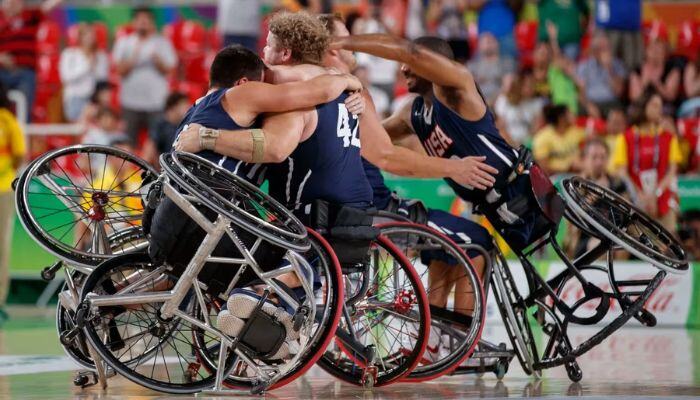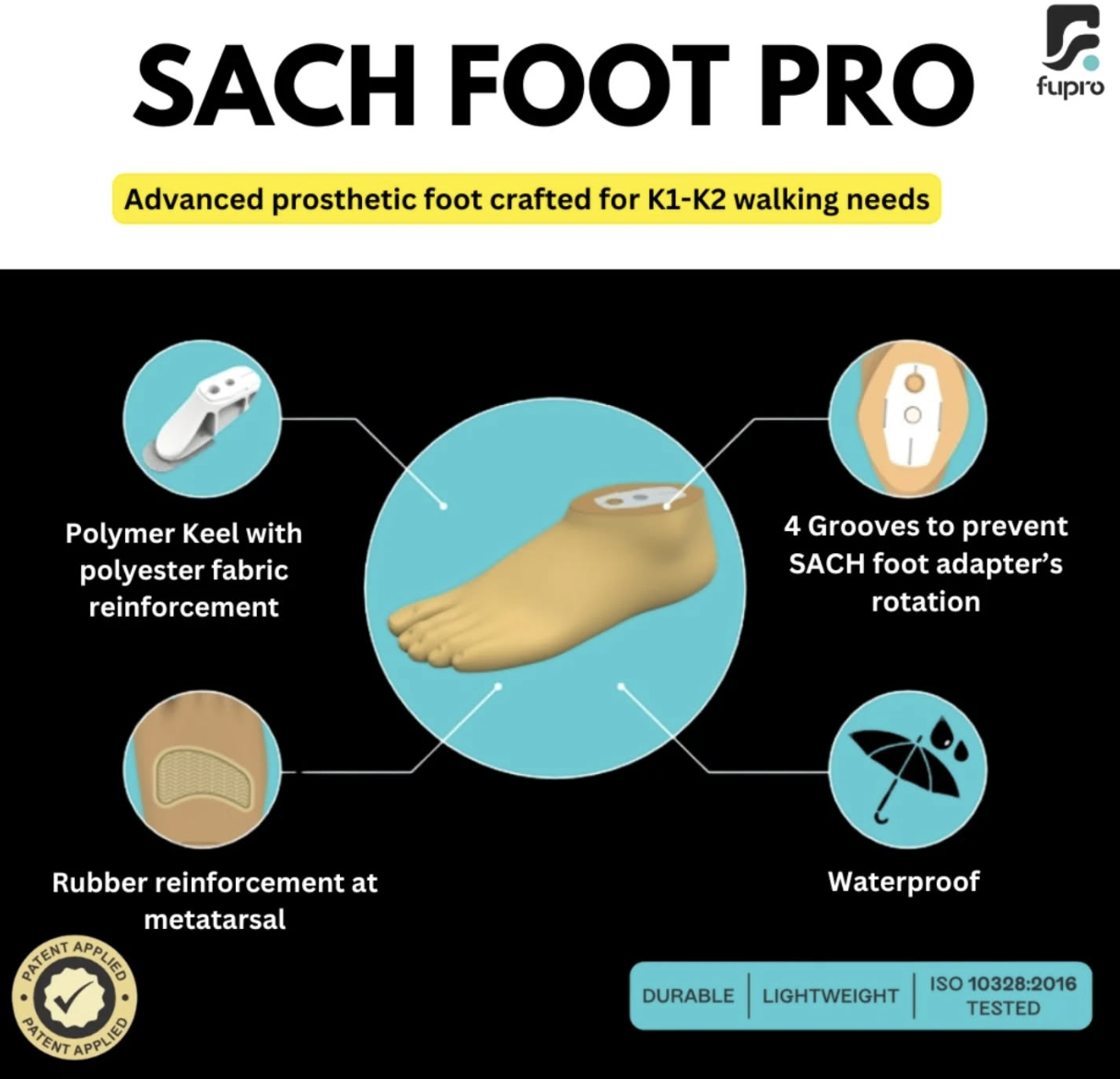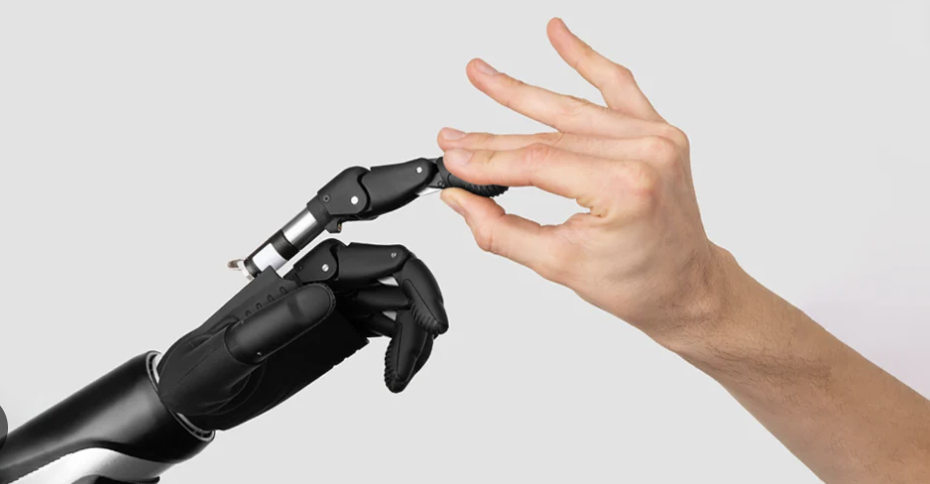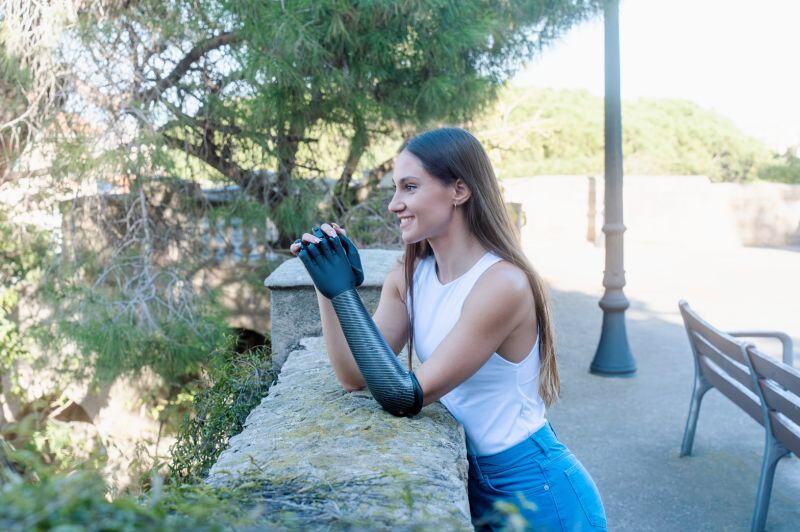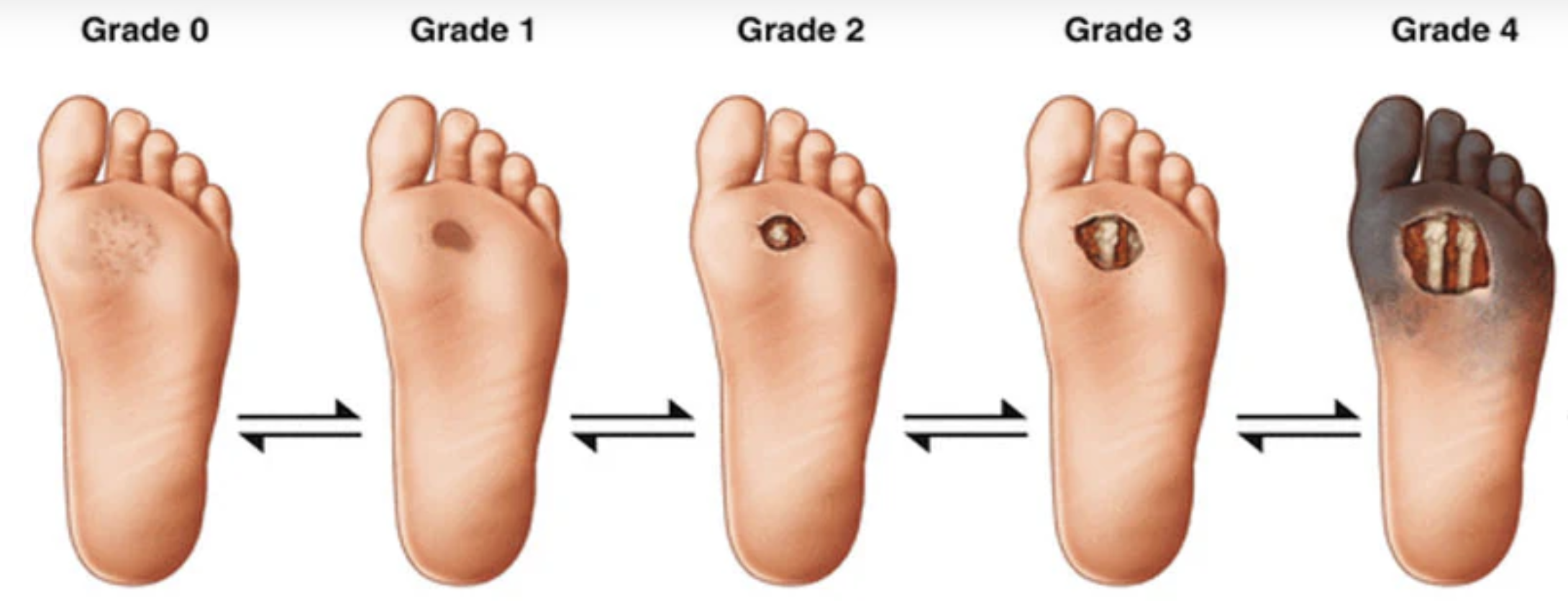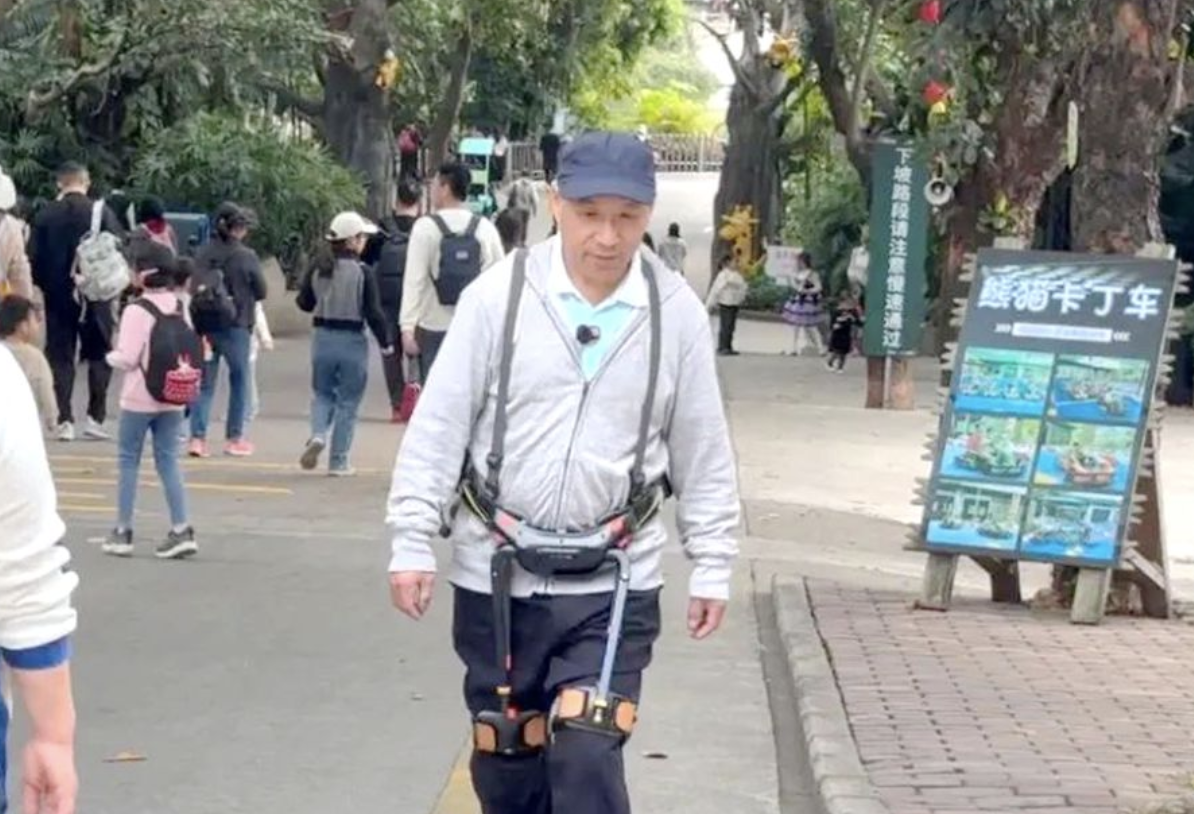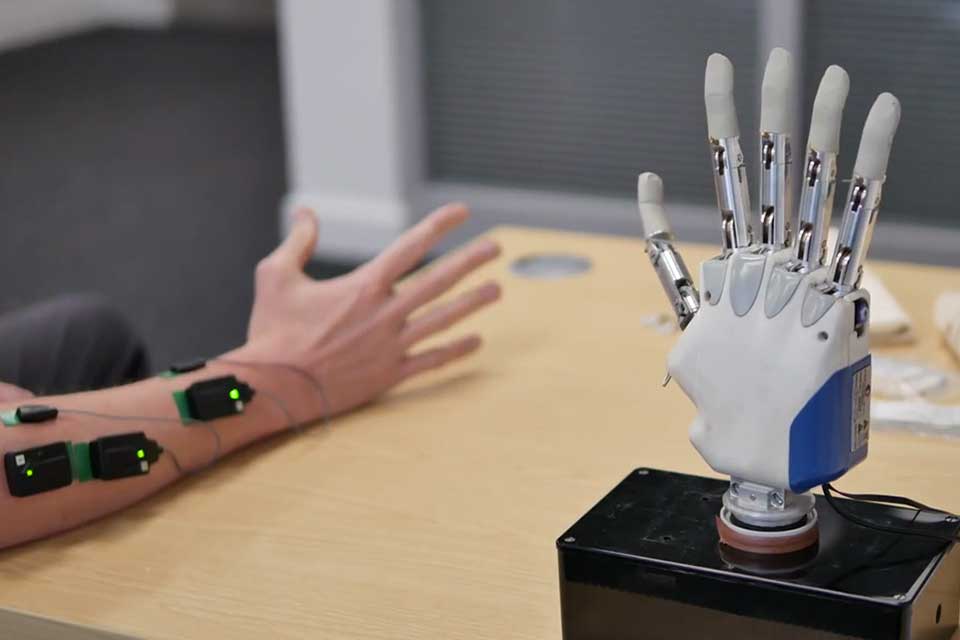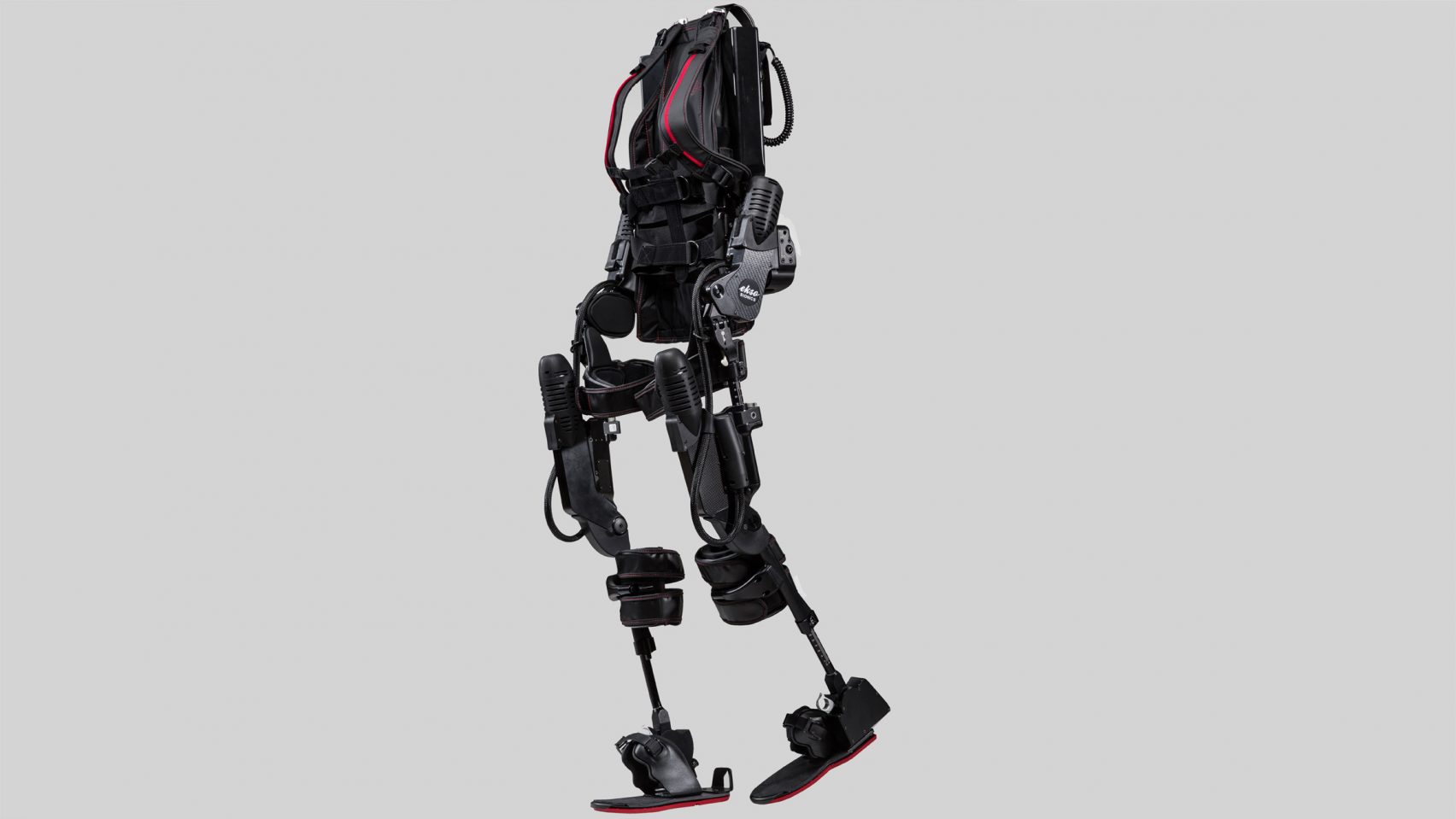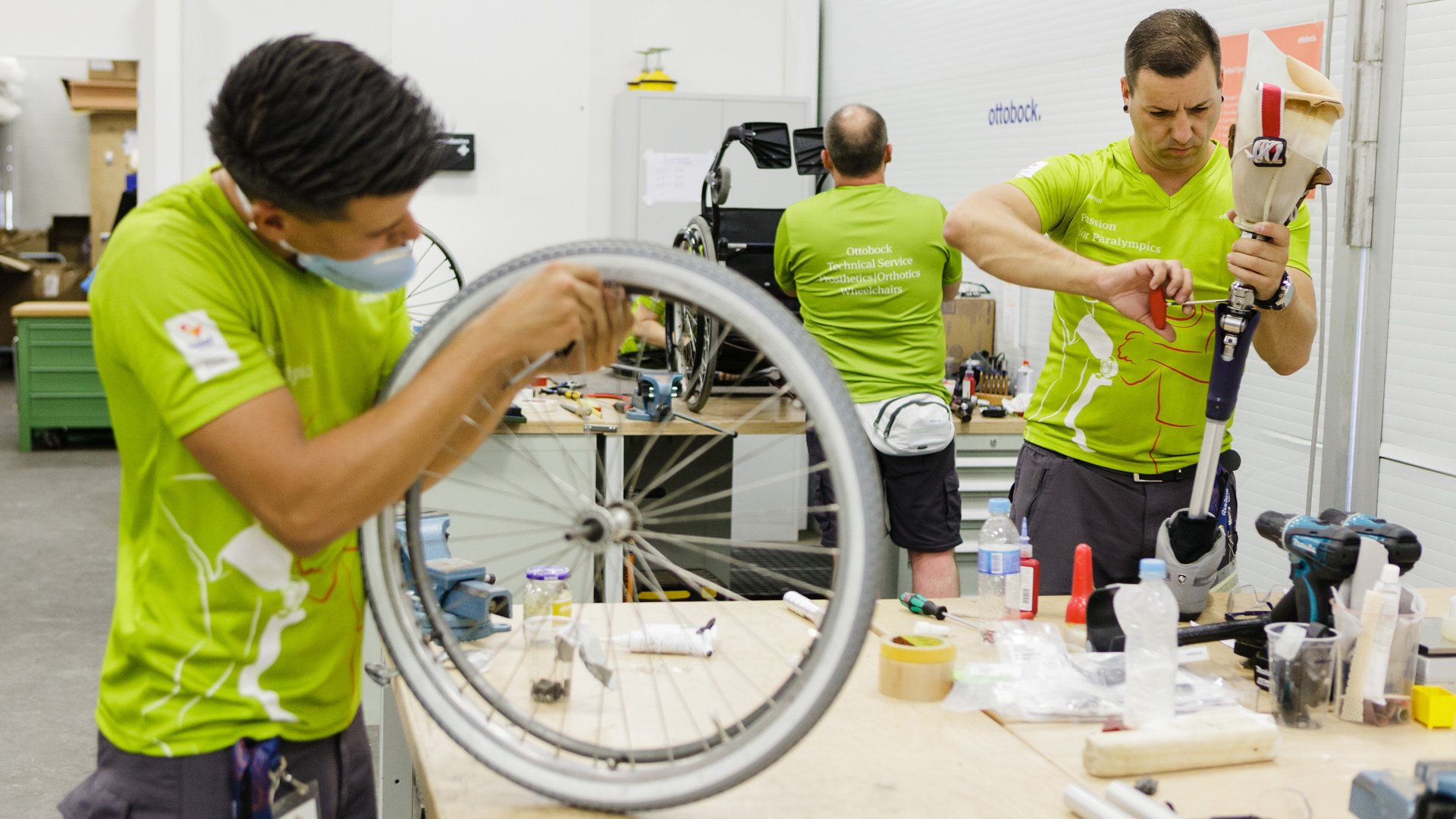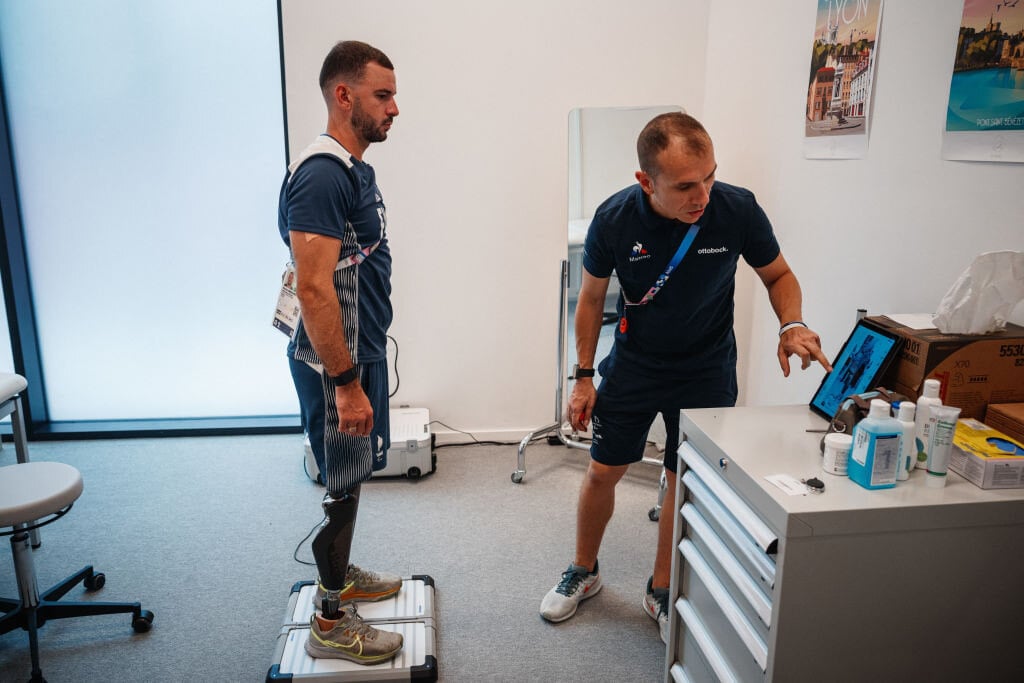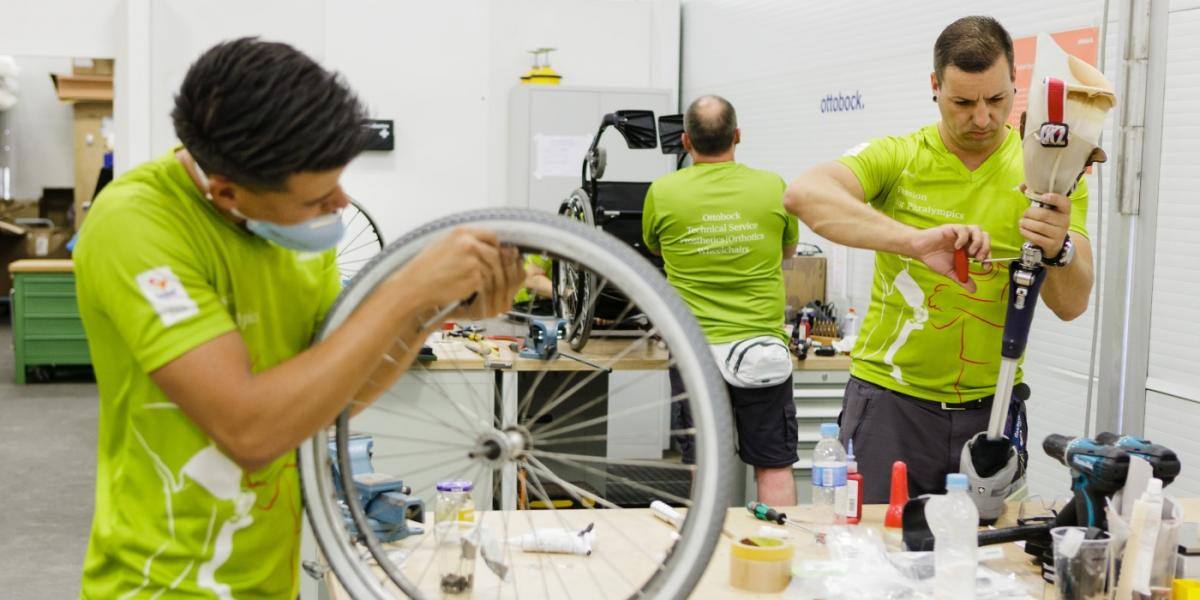Sport is for everyone and therefore should be accessible to all, regardless of individual conditions and limitations. Nevertheless, sport is often associated with performance, and in order to achieve this, physical integrity is wrongly assumed to be a basic requirement. That this is not the case is proven by all the Paralympic athletes who, despite their personal limitations and in some cases with the help of technological means – including 3D printing – achieve extraordinary sporting performances and demonstrate them to the general public at the Paralympic Games.
In fact, sports and associations for athletes with disabilities have existed for more than 100 years. A major contribution to what we know today as the Paralympic Games was made by Dr. Ludwig Guttmann with the establishment of a spinal injury center at Stoke Mandeville Hospital, where he used sports competitions to rehabilitate wounded soldiers.These Stoke Mandeville Games are the basis of the Paralympic Games, which were officially recognized by the IOC in 1984. “Para” is derived from the Greek ‘beside’ and implies that the Olympic and Paralympic Games exist and are held side by side.
Since the beginning of the Paralympics, athletes with different physical and cognitive impairments have taken part in the competitions, divided into different groups depending on the type of disability. There are also classification systems for each discipline to ensure fair competitions. Athletes competing in the same classified category must have similar functional abilities in terms of movement, coordination and balance.
At the Paris 2024 Paralympic Summer Games currently taking place, 4,400 athletes will be competing for medals in 22 different sports disciplines. It is expected to be the biggest Paralympic Games to date, allowing the athletes to compete with their international rivals and give Para sport a stage. Of course, the athletes and their achievements will be in the spotlight, but their companions, i.e. technological aids, also have a role to play. Thanks to modern technology, parasports are showing more and more innovations and technical novelties that enable athletes to go beyond their limits.
3D Printing at the Paralympic Games
Parasports rely on technological aids to varying degrees. From wheelchairs and prostheses to sports equipment, technological progress is helping athletes to exceed their limits and further develop para-sports.
“Sport is the best medicine,” explains Heinrich Popow, former German track and field athlete and multiple Paralympic medal winner. At the same time, he emphasizes the importance of technology in parasports. “The use of aids is a sport in its own right,” says Popow and he therefore advocates a separation between Olympic sport and Paralympic sport, which relies on technological aids and therefore pursues its very own performance limits and goals. “That’s the beauty of Paralympic sport. You notice how the performance density is getting bigger and bigger because you’re doing performance-oriented sport,” emphasizes Popow.
A combination of different technologies is often used to exceed performance limits .For Paralympians, this opens up completely new sports and also new possibilities in their existing discipline. 3D printing, for example, in combination with other technologies – e.g. 3D scanning and design optimization – can contribute to greater ergonomics, mobility and comfort and thus promote optimal performance in competition and training. This is why more and more athletes are embracing the benefits of 3D printing and over the last few years we have seen an increasing number of 3D printed aids at the Paralympic Games, including of course state-of-the-art prosthetics and orthotics, but also equipment such as ergonomic grips and gloves in the cycling and wheelchair competitions.

Switzerland’s Flurina Rigling is competing in the current Paralympic Games in Paris with 3D-printed shoes (photo credits: Tobias Lackner)
Swiss athlete Flurina Rigling, who will be competing in the cycling events at the 2024 Summer Paralympic Games in Paris with 3D-printed shoes (and who already won a bronze medal on August 29), sums up the benefits of 3D printing for athletes: “This innovation helps me enormously,” says Rigling. “You have to imagine it: I used to have a single leather shoe. Once it was wet, I had to let it dry first. Now the 3D printer shoes are produced comparatively quickly and they are much lighter than the old ones. That makes a huge difference to me.”
The fact that more and more high-performance materials can be processed using 3D printing processes also increases comfort for athletes.Multi-material printing can be used to produce components with soft and hard parts, for example. Other advantages of 3D printing include individualization and a high degree of customizability. The printed objects can be made to measure and are then perfectly tailored to the respective person; on the other hand, plus they can also be adapted very quickly if, for example, the person’s needs change due to an injury.
And given the vast range of athletes’ aids and parts, it goes without saying that various 3D printing processes and materials can be used. This is why the Repair Service Center has numerous technological resources on site to carry out repairs. Notably in terms of processes, we find FDM, SLS and MJF.
FDM 3D printing is used primarily for prototyping and test parts in order to ensure that sockets, especially, will perfectly fit the athletes (as being too tight or too loose can have a negative impact). Meanwhile, for many prostheses that will be used directly by the athletes, MJF 3D printing and SLS are popular choices to create high-performance parts for parasports.

Prostheses now often come from 3D printers (photo credits: Autodesk)
This brings us to materials. As you might expect, what is used differs greatly depending on the part being made. Standard materials for 3D printing, such as nylon and ABS can be used, especially for prototypes, but carbon fiber-reinforced materials are used much more frequently for end-use parts. This is because with composite parts, reinforcing fibers (including CF and GF) can be embedded either specifically or continuously in a thermoplastic matrix. In 3D printing, the reinforcing fibers can be placed precisely, which means that the stiffness of the parts can be specifically adapted and lightweight parts can be printed at the same time. Furthermore, metal 3D printing is also used in Parasport. Titanium, for example, is used to print personalized prostheses, which are then much stronger than standard prostheses.
One example of this is Anna Grimaldi, a Paralympian from New Zealand, who uses a 3D-printed titanium prosthesis to safely lift 50 kilograms. Which method and material is chosen often depends on the individual case, as the athletes’ focus is on performance and comfort. Sometimes a combination of different technologies (CNC, injection molding, 3D printing) is used to create the best solution for the athlete. Nevertheless, the numerous examples from recent years show that 3D printing is gaining ground at the Paralympic Games.
3D Printing for On-Site Repairs
Repairs should also be mentioned in this context. High forces, external impacts, falls and wear and tear can lead to wear, damage and broken parts in all sports equipment. 3D printing enables fast repairs, depending on the extent of the damage, even directly on site.
For this reason, there is a special repair workshop at the Paralympic Games, the Ottobock Technical Repair Service Center. Ottobock is a long-standing partner of the International Paralympic Committee (IOC) and has been providing support for the athletes in Paris since Seoul 1988 with its international team of 164 people. In addition to the 720 square meter main workshop in the Olympic Village, there are also 14 smaller workshops in the sports facilities. The main workshop includes a welding facility, a tailoring shop, a shoemaking shop, a special thermoplastics department, as well as 3D printers and 3D scanners.

The Ottobock Repair Service Center carries out various repair work – including with 3D printers (photo credits: 3Dnatives)
Just like a pit stop in Formula 1, the athletes come to the workshop with their damaged parts and concerns and can rely on the team on site to be able to start the competitions on time with the repaired material. Julian Napp, Technical Director of the workshop in Paris and master orthopaedic technician at Ottobock, emphasizes the importance of modern technologies: “The new digital possibilities help us to help the athletes faster. And time is a key factor for both the athletes and us technicians at the Paralympics. However, the success factor in the workshop remains the team’s expertise. Creativity, solution orientation and experience paired with the latest technology – that’s our support for the athletes.”
Ottobock has also been using 3D printers on site since Tokyo 2021, as Peter Franzel, Head of Global Events, Exhibitions & Sport at Ottobock, explained in a press conference. In Paris, the team has 3D printers from Cosmyx and Markforged at its disposal to produce models and end parts directly on site. Furthermore, use of 3D printing has grown since Tokyo, from just one test machine to the current operation.
“We can print, scan and adapt a test socket (for a prosthesis) on site.The test socket can still be edited if, for example, growths, scars etc. need to be taken into account.need to be taken into account. The modeled socket is then scanned again for the final shape. The scan is then sent on to Grenoble (to the French Ottobock colleagues) and printed using the powder printing process,” comments Franzel when asked about a specific application example of 3D printing.

The Ottobock Repair Service Center has 3D printers and hand scanners on site. (photo credits: 3Dnatives)
Of the repair orders received up until this point by Ottobock, 56% are mainly for wheelchairs, with the remaining percent consisting of prostheses and orthoses. In Tokyo, Ottobock recorded a total of 2,200 repairs; at the Paralympics in Paris, the Repair Center is now almost on a par and will probably break the mark by the end of the Games. The speed and technological range of the Ottobock Repair Service Center is crucial for the athletes, so that they receive the best possible care in the event of sudden damage to their assistive equipment and can concentrate fully on their performance.
We cannot directly participate in the athletes’ performances with our 3D printing. But the fact that we can scan, model and manufacture quickly means that we can also supply the athletes quickly. Of course, this helps them to concentrate much better on their sport and to be able to complete their training sessions. This is in contrast to traditional methods where fitting athletes was very time-consuming, because you had to make a plaster cast and then have a fitting. That’s where I see the biggest impact of 3D printing. – Leon Fiolka, CPO at Ottobock
3D technologies offer many possibilities and 3D printing on site comes in handy for many athletes. “Felix Streng came to our Repair Center and wanted a scan of his residual limb,” says Fiolka, who is currently working in the repair center in the Paralympic Atheletes’ Village, he continues: ”He was really happy that we now have the opportunity to scan his residual limb here on site, because it saved him a flight to Germany. Another example of a success story is a small 3D-printed replacement part for a wheelchair that we designed so that the brakes worked again and the athlete was able to drive his everyday wheelchair safely through the streets again.”
Heinrich Popow also emphasizes how valuable the Repair Center with its technological possibilities is for the athletes and tells an anecdote about damage just before a competition: “My gold medal in London also has to do with the Ottobock Repair Service.If it hadn’t been for the Repair Service, I would never have won the gold medal!”

Wheelchairs account for a large proportion of repairs (photo credits: Ottobock)
Applications at the Paralympic Games
It should be clear now, 3D printing makes it possible to implement designs that would not be possible with other technologies or would not be profitable in terms of production speed and costs. Prototypes and end-use parts can be produced quickly using additive manufacturing and design iterations can be implemented cost-effectively. Modern design options also make it possible to produce particularly lightweight parts and achieve better aerodynamics.
Now, it is time to look more concretely at how exactly 3D printing has been used in the Paralympic Games. Generally speaking, 3D printing applications in parasports can be divided into two categories: prostheses & orthoses and tools. What divides them is that one is integrated into the body of the athlete while the other can be considered to be part of the athletes’ equipment.
One of the first examples of this comes from German cyclist Denise Schindler who competed at the Rio 2016 Paralympic Games. Schindler turned to a 3D printed prosthesis, made with the help of Autodesk using digital measuring then 3D printing, as it could be made to be 14% lighter than other carbon fiber parts while maintaining the same strength. Not only that, but production time was greatly reduced. While it takes about12 weeks to manufacture a prosthesis using traditional methods, the additively manufactured prosthesis could be printed in just 48 hours. As a result, she won both bronze and silver as well as an entry in the Guinness Book of Records for the first 3D printed prosthetic used at the Paralympic Games.

Denise Schindler raced to bronze and silver in 2016 with the 3D-printed prosthesis (photo credits: Autodesk)
And that’s not the only example. American athlete Mike Schultz turned to para-snowboarding when he could no longer compete in motorcycling and extreme snowmobiling after the loss of his leg. But, he needed a unique prosthetic cover htat could handle the pressure of intense athletic activity. This is where 3D printing comes in.
Stratasys was able to help make a prosthetic with two different joints (since Schultz’s leg had been amputated above the knee) using TPU 92A. Not only was it used for the final part, but it also helped in the design process as additive manufacturing allows for faster iteration, ensuring it met Schultz’s different requirements. In the end, Mike Schultz was able to win Paralympic Gold and Silver using the prosthetic.
Orthotics also have a role to play. Latvian wheelchair fencer Polina Rozkova was facing a design challenge in her journey to the Rio Paralympics. However, Stratasys was able to create a custom 3D printed back brace that she could use in both trainings and compeitions. 3D printing allowed for the creation of a custom-fitted one to one back brace specifically for her lower back to limit any discomfort or strain during physical activity, made with Nylon 12 to ensure that it would be a lightweight and flexible part.
What about tools? These are parts that are being used often on the equipment that Paralympians use but that are not necessarily integrated into their bodies. And this is one of the areas where additive manufacturing is really starting to shine.
For example, in 2014, the German biathlete Martin Fleig made headlines by competing at the Paralympic Winter Games in Sochi with a 3D-printed “sled”. Fleig developed this sit-ski sled as part of the “Snowstorm” project together with the Fraunhofer Institute for Mechanics of Materials. The racing device was perfectly adapted to Fleig’s body using 3D design and 3D printing. Fleig achieved 9th place with the final 3D-printed racing device made of PA12 with glued-in steel wires.

Martin Fleig on his 3D-printed “sled” (photo credits: Fraunhofer IWM)
Other examples include 3D printed snowboard bindings for British Army veteran turned Paralympic snowboarder Darren Swift, developed by the Centre for Modelling & Simulation (CFMS). These were made using glass-reinforced nylon and helped him to gain an edge over his competitors in China 2022. British Paralympian Joe Townsend also used 3D printing for bespoke parts on his adaptive racing bike while Paralympic paracanoe champion Emma Wiggs MBE used 3D printing in 2020 to create a paddle that was perfectly adapted to her hands, leading to a new Paralympic gold and a record time of 57.028 seconds at Tokyo 2020.
Another trend we have seen is for 3D printed gloves. Joe Townsend, Tatyana McFadden and Arielle Rausin have all used 3D printing to craete more durable gloves that are able to be molded to the athletes’ hands and adapted depending on their individual needs. These are especially well suited to wheelchair racing and McFadden will even be using hers in the Paris 2024 Paralympics.
And there you have it! 3D printing is slowly helping to transform parasports, serving as a tool for athletes as they used their bodies to go above and beyond the limits of any human. With the 2024 Games ending on Sunday, never has there been such a good opportunity to celebrate the use of additive manufacturing in sport.

Tatyana McFadden will compete at the 2024 Paralympic Games with 3D-printed gloves (photo credits: Olympics.com)
And there you have it! 3D printing is slowly helping to transform parasports, serving as a tool for athletes as they used their bodies to go above and beyond the limits of any human. With the 2024 Games ending on Sunday, never has there been such a good opportunity to celebrate the use of additive manufacturing in sport.
What do you think of the use of 3D printing in the Paralympic Games? Let us know in a comment below or on our LinkedIn, Facebook, and Twitter pages! Don’t forget to sign up for our free weekly newsletter here for the latest 3D printing news straight to your inbox! You can also find all our videos on our YouTube channel.
*Cover Photo Credit: Athlete Howie Sanbornd with his 3D-printed grips from Joe Townsend
